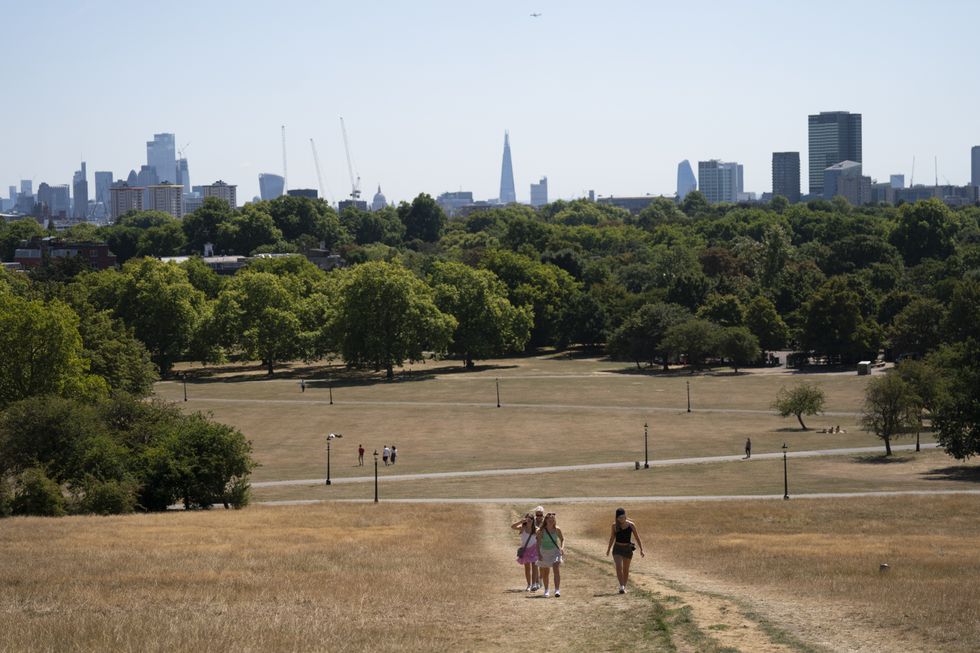Don't Miss
Most Read
Trending on GB News
Dry conditions have prompted the National Drought Group (NDP) to move parts of the South West, parts of southern and central England, and the East of England into official drought status.
The change could lead to more measures such as hosepipe bans – but the Environment Agency has reassured the public that essential water supplies are safe.
The NDG is made up of representatives from the Department for Environment Food and Rural Affairs, water companies, the Environment Agency, the National Farmers’ Union, Natural England, Consumer Council for Water, water services regulator Ofwat, Water UK and the Drinking Water Inspectorate, as well as the Angling Trust and the Rivers Trust.
Water Minister Steve Double said action was already being taken by the Government, the Environment Agency and others to manage the impacts.
Dry conditions have hit the UK
Kirsty O'Connor
Wildfire severity index Sunday August 14
PA Graphics
Mr Double said: “All water companies have reassured us that essential supplies are still safe, and we have made it clear it is their duty to maintain those supplies.
“We are better prepared than ever before for periods of dry weather, but we will continue to closely monitor the situation, including impacts on farmers and the environment, and take further action as needed.”
The most recent data showed rainfall totals for August have ranged from 12 percent of the long-term average in north east England to 0 percent in southeast and south west England.
Meanwhile river flow data revealed almost 90 percent of measuring sites were showing below normal readings, with 29 percent classed as “exceptionally low”.
It comes after the driest July on record for some areas and the driest first half of the year since 1976.
Four water companies, Welsh Water, Southern Water, Thames Water, and South East Water have all imposed hosepipe bans, while Yorkshire Water has announced a ban will start on August 26.
The heat and dry conditions have also taken their toll on agriculture.
NFU deputy president Tom Bradshaw said the situation was “hugely challenging” for farmers as they face running out of irrigation water and having to use winter feed for animals because of a lack of grass.
The NFU also said “tinder dry” standing crops and parched grass posed a huge risk of fires spreading.
Mark Hardingham, chair of the National Fire Chiefs Council, said: “While we are likely to see more wildfires due to the current conditions, it is impossible to say whether this will be more than when the country experienced 40-degree temperatures.
“The bigger risk at the moment is a combination of temperature and wind speed, which will contribute to fire spread and makes incidents harder to manage and extinguish.”












